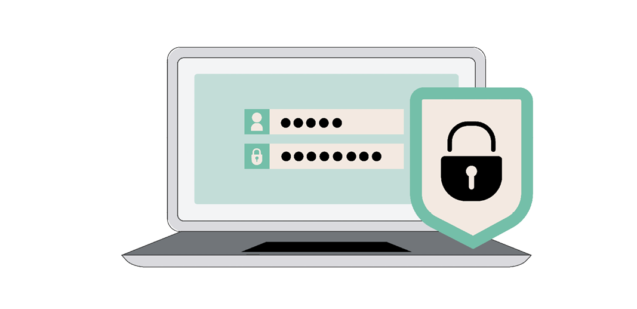Categories

Nobody plans to have a financial crisis, but they can happen to anyone. Perhaps a student loan, youthful indiscretions, or poor planning got you in a hole that you then got stuck in. Or maybe circumstances totally beyond your control knocked out years of thoughtful strategizing. Either way, there are things you can and should do to get back on track. While you can’t restore your credit overnight, you can make progress faster than you might think. With diligence and a good plan, a great credit score can be earned back.
Remember, financial institutions use your credit score, or FICO score, as a factor in determining whether or not to loan you money — like for an auto loan or a home mortgage — and if so at what kind of interest rate. The better your credit score, the more favorable terms you will get. Credit scores range from 300 to 850. The national average is 695. A higher credit score represents a lower risk and therefore, may result in a better rate from your lender. So it is in your best interest (pun intended) to pay attention to your credit score and do what you can to improve it. With that goal in mind, here are some helpful steps you can take:
7 Steps to Rebuilding Your Credit
1. Check your credit report
Every year you are entitled to a free credit report. Make sure the information listed there is accurate. You don’t want the transaction of someone with a similar name to impact your credit rating. Also, old debts should drop off after seven years, but that doesn’t necessarily happen automatically. If you find an error on your report you should dispute it. A good (and free) resource to help you manage, track, and ultimately improve your credit report is Credit Sesame.
2. Get and use a credit card wisely
If your current situation does not allow you to obtain a standard, unsecured credit card, you can probably get a credit card from a store. These cards have notoriously high rates, and of course the store is hoping you will splurge on things you may not really need and then take your time paying them back. However, if you can stick to just one small purchase a month (something you would have bought anyway) and pay it off in full at the end of the month, then these cards can be a useful tool for rebuilding your credit. If you cannot limit your purchases to just necessities that you pay off each month, then you are hurting your credit score — the opposite of your goal.
Another option if your credit rating is very poor is to apply for a secured credit card. A secured card does not have as much positive impact as an unsecured card, but you are much more likely to qualify. These cards require you to pay a security deposit up front, so the risk to the lender is essentially nothing. Here again, the strategy is to make a small monthly purchase that you would have anyway, and then to pay off the card in full every month. Your on-time payments are reported to credit bureaus monthly, so staying on top of these payments will start helping to improve your credit score quickly. After a period of time successfully operating this way, you will likely become eligible to get your collateral back and switch over to a more traditional unsecured card, which will be more beneficial to your credit score.
3. Understand credit utilization
One of the biggest factors impacting your credit score is known as credit utilization. This is the ratio of the amount of credit available to you compared to what you are actually using. For instance, if you had a credit limit of $5000, and a balance of $2000, your credit utilization would be 40%. You want to get this number as low as possible. Under 30% is considered good. A high credit utilization number would indicate to potential creditors that you are over-extended and a higher risk not to repay. Paying down debt and improving your credit utilization rating will improve your credit score quickly because it is recalculated after each billing cycle.
4. Maintain a variety of credit
While working toward elevating your credit score, it will benefit you to have a couple different kinds of credit. The two most common are revolving credit and installment credit. Revolving credit basically includes credit cards and home equity lines. They offer a line of credit that you can access any time you need it. You’ll have a cap, or limit, on this type of credit and you’ll make monthly payments (that can vary in amount) that include interest.
Installment credit refers to fixed loans with an established amount that you pay in regular increments, or installments, each month until the balance is paid in full. This kind of credit includes everything from mortgages to car loans to student loans. There is no hard and fast formula for how much of one kind or the other is the best mix. Nor is it known how the mix specifically affects your FICO, but we do know that responsibly managing a little of each improves your score.
5. Pay attention to payment history
The largest single factor in determining your credit score is your payment history. Potential creditors will want to know they can count on you to pay on time. So, if you are behind on your payments, you need to prioritize getting caught up. You won’t be able to improve your credit score unless and until you do. If you can’t afford to get caught up, contact your creditors and work out a plan that is mutually agreeable. Yes, this can be an uncomfortable conversation, but it might be easier than you think. Most creditors would rather work with you than risk not getting paid at all.
It is not just credit bills that impact your record of paying on time. Late utility and rent payments can be reported to credit bureaus as well. Setting up automatic withdrawals can be a good way to ensure you make those payments on time.
6. A long credit history is helpful
When possible, avoid closing your credit card accounts. If you are trying to break bad habits, it is an understandable temptation to just close out your credit card accounts, but having a long history of credit is beneficial to your credit rating. Closing accounts can also impact your credit utilization ratio. So assuming you are not so behind on your payments that you have no choice, keep your cards open and work on paying down the balances. You don’t have to keep the card in your wallet if doing so is too much of a temptation.
7. Stay within your budget
This may sound obvious, but it is too important not to mention. Regardless of the circumstances that led to your credit crisis, it is probably fair to say that your life circumstances have changed and your budget needs to change accordingly. If you’ve never lived with a realistic budget, you need to start. And if you did, you will need to make adjustments to make it fit your current situation. The main thing is to spend less than you make. This may require some difficult reflection and tough decisions. But through some combination of figuring out how to spend less, or bring in more, you need to get to that point. Otherwise, all your credit repair efforts could backfire.
It is normal for credit scores to ebb and flow as life unfolds. But if your credit score has lowered to the point that you are missing opportunities — or paying exorbitant interest for your purchases, take initiative to get that all-important number moving in a positive direction again. With discipline and strategy you can succeed.
At Spero your financial success is ours. We are here to help you get back on your feet and achieve your financial goals. Even if you already have a couple credit cards in your wallet, consider an Spero credit card to help lower your credit utilization and stabilize your credit. We offer a no annual fee, no cash advance fee, and no balance transfer fee card with flexible payment options.



